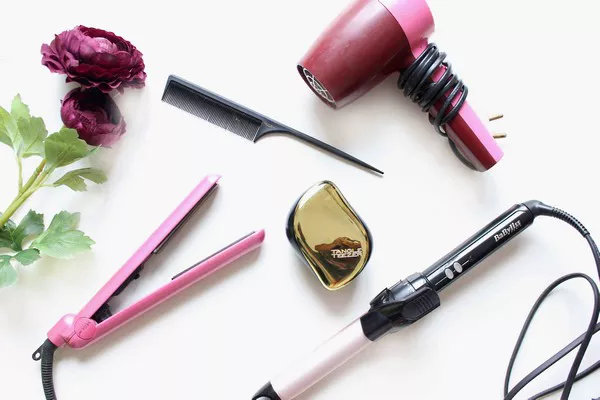DIY hair treatments and styling have gained popularity for their cost-effectiveness and convenience, allowing individuals to experiment with various hair care routines and styles from the comfort of their homes. However, despite the allure of DIY hair care, it is essential to be mindful of the common mistakes that can occur during the process. From improper product usage to neglecting proper hair care techniques, these mistakes can lead to undesirable results and potential damage to your hair. By understanding and avoiding these common pitfalls, you can ensure that your DIY hair care endeavors yield successful and satisfactory outcomes without compromising the health and appearance of your hair.
I. Using Incorrect Hair Products
1. Inappropriate Product Selection:
One of the most common mistakes when DIY-ing hair care is using products that are not suitable for your hair type. Using the wrong shampoo, conditioner, or styling products can lead to dryness, frizz, and even breakage. It is essential to understand your hair type and its specific needs to select the appropriate products that promote the health and vitality of your hair.
2. Overusing Hair Styling Tools:
Excessive use of heating tools such as hair straighteners, curling irons, and blow dryers can damage the hair cuticles, leading to dryness, brittleness, and split ends. It is crucial to use these tools sparingly and employ heat protectant products to minimize the adverse effects of heat styling on your hair.
II. Neglecting Proper Hair Care Techniques
1. Rough Towel Drying:
Vigorous towel drying can cause friction and damage to the hair cuticles, resulting in frizz and breakage. Instead, gently pat your hair with a soft towel or use a microfiber towel to absorb excess moisture and minimize hair damage during the drying process.
2. Skipping Regular Trims:
Neglecting regular hair trims can lead to the accumulation of split ends and hinder the overall growth and health of your hair. Schedule regular trims every six to eight weeks to prevent split ends from spreading and promote the growth of healthy, lustrous hair.
III. Improper Application of Hair Color
1. Failure to Conduct Patch Tests:
Failing to conduct patch tests before applying hair dye or bleach can result in adverse allergic reactions and scalp irritations. Conducting patch tests at least 48 hours before coloring your hair is essential to ensure that the products are safe and compatible with your skin and scalp.
2. Incorrect Application Techniques:
Applying hair color incorrectly can lead to uneven color distribution and unnatural results. Follow the instructions provided on the hair color packaging and consider seeking professional guidance or assistance for complex coloring techniques to achieve the desired hair color while minimizing the risk of damage and color inconsistencies.
IV. Ignoring Hair Care Routine
1. Lack of Regular Conditioning:
Skipping regular conditioning treatments can lead to dry, dull, and lifeless hair. Incorporate deep conditioning treatments into your hair care routine to promote hydration, improve hair texture, and restore the natural luster and shine of your hair.
2. Neglecting Scalp Health:
Neglecting scalp health can lead to dandruff, itchiness, and hair thinning. Incorporate scalp care products and practices into your hair care routine to maintain a healthy scalp environment and promote optimal hair growth and vitality.
V. Overlooking Allergic Reactions and Sensitivities
1. Ignoring Allergic Reactions:
Ignoring allergic reactions and sensitivities to certain hair care products can result in severe scalp irritations and adverse health effects. Be vigilant about any signs of allergic reactions, such as redness, itchiness, or swelling, and discontinue the use of the product immediately.
2. Using Harsh Chemicals Without Caution:
Using harsh chemicals without caution can lead to scalp damage and hair loss. Pay attention to the ingredients of the products you use and opt for natural, organic, or mild formulations that are gentle on your hair and scalp.
By avoiding these common mistakes and adopting proper hair care techniques, you can ensure that your DIY hair care endeavors yield successful and satisfactory outcomes while promoting the overall health and appearance of your hair.
FAQs
1. How can I determine my hair type and select the appropriate hair care products for my specific needs?
Determining your hair type involves assessing the texture, thickness, and porosity of your hair. Consult with hair care professionals or conduct online research to identify your hair type and its unique characteristics. Select hair care products formulated specifically for your hair type to address its specific needs and promote optimal hair health and vitality.
2. What should I do if I experience an adverse reaction to a DIY hair treatment or product, and how can I prevent such reactions in the future?
If you experience an adverse reaction to a DIY hair treatment or product, discontinue its use immediately and seek medical advice if the symptoms persist or worsen. Conduct patch tests before using any new hair care products to assess their compatibility with your skin and scalp. Opt for hypoallergenic, natural, or organic hair care products to minimize the risk of allergic reactions and sensitivities and prioritize the health and well-being of your hair and scalp.

